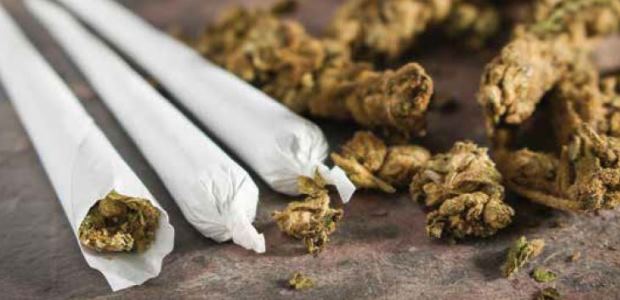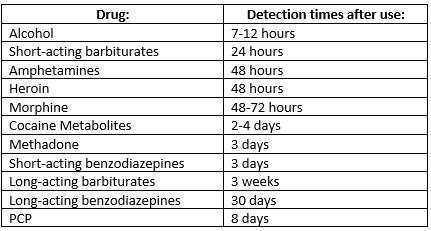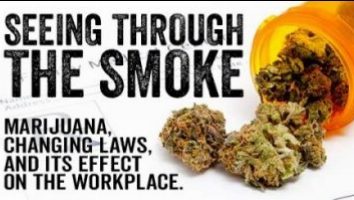

Can Alcohol Show Up In A Urine Test?
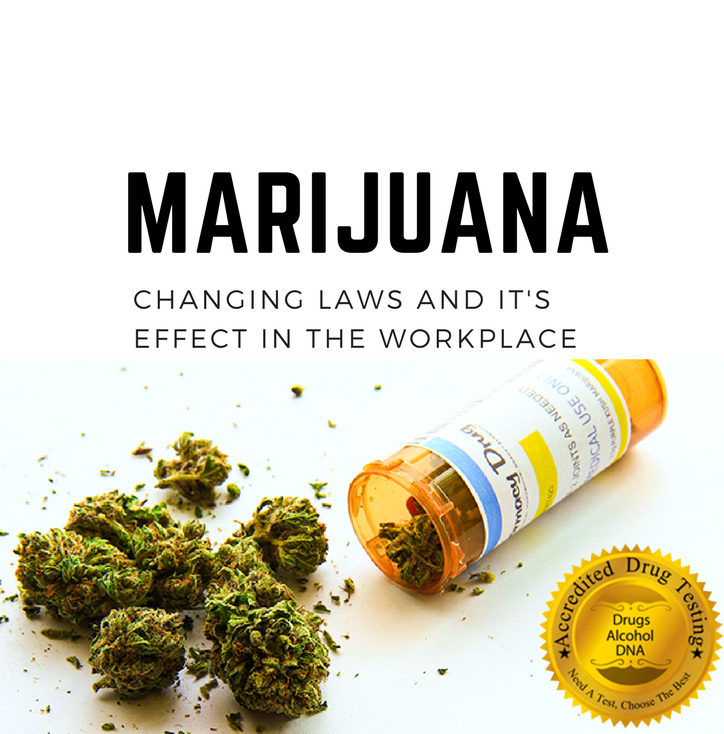
New York City Announces New Law Prohibiting Testing for Marijuana
Weed Breathalyzer Could Be The Device Of The Future!
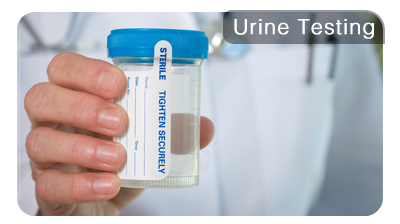
How Far Can A Urine Test Detect Drugs?

Can you fail a drug test for alcohol?
Can You Fail a Drug Test For Alcohol?
The plain and simple answer is yes. If a particular drug testing panel contains alcohol as a marker, it is possible you may fail a drug test for alcohol. Oftentimes employers and individual’s think of drugs and alcohol as one in the same. In fact, both substances have the ability to cause impairment of a person’s mental, physical abilities, cause long-term health issues, and can foster unsafe situations.
Due to the abuse of alcohol and its long-term impact on public safety, society, addiction and health problems, it is common for employers to establish a drug-free workplace testing program that includes both drug and alcohol testing.
Concerns regarding substance abuse and addiction concerns is sweeping the nation and various companies may choose to implement alcohol testing as a deterrent and promote safe and healthy working environments. For this reason, one common question many employers and employees have regarding workplace alcohol and drug tests is, “Does alcohol show up in a drug test?” Let’s find out .
Does Alcohol Show Up In a Drug Test?
As we take a deeper look at if alcohol will show up in a drug test, we find several options. It is important to note that a standard drug test does not test for alcohol. However, alcohol can be included in a drug test if specifically requested. Thus, if you’re interested in testing employees or individuals for both drugs and alcohol, simply consult with your drug testing provider to determine what type of program best meets your needs.
How Can An Employer Test For Alcohol In The Workplace?
The Substance Abuse and Mental Health Services Administration (SAMHSA) recommends testing at the very minimum of the 5 most commonly abused drugs: (amphetamines, THC, cocaine, opiates, and phencyclidine (PCP) as well as alcohol. As stated previously, a standard drug test does not evaluate the presence of alcohol in a person’s system, but many companies elect to include alcohol in their written drug-free workplace policy. The most common form of alcohol testing is a breath alcohol test; however, urine, saliva or hair testing options are available as well. In addition, with the current climate of the opioid epidemic, many companies are requesting their drug test include additional drugs beyond the standard five mentioned above (e.g., adding synthetic opioids and ecstasy).
Which Alcohol Test Is Right For Me?
Let’s dig a little deeper and determine if alcohol will show up in a drug test? If you plan to test for alcohol, it is important to understand the different testing methods available and the amount of time that alcohol is detectable in the human body.
In hair, alcohol is present for up to 90 days. In blood or oral fluid, it is present for 12-24 hours. Finally, in urine alcohol can be present for 6-80 hours (depending on the method used for testing).
The two most common ways an employer can test for the presence of alcohol are through breath and saliva tests:
Breath: This method is the most common method for alcohol testing in the workplace. Breathalyzer is the brand name of the original device and is the one of testing methods that provides a real time result and will measure impairment. The Department of Transportation (DOT) has established strict requirements for the devices used to perform breath alcohol tests. All devices used for DOT alcohol testing must be on the Conforming Products List of the National Highway Traffic Safety Administration. We recommend that employers or individuals only utilize devices that meet these high standards.
Saliva: This detection method detects the presence of ethanol, a by-product of beer, wine, and spirits. Although slightly more expensive than urine tests, saliva tests are easy to perform and can also detect alcohol ingested within the past day or two.
Finally, blood, hair and urine tests are most often used in forensic, legal and civil testing but infrequently in the workplace.
For more information call us today, 800-221-4291

Music Festival to Provide Drug Testing
What will the drug testing look like?
“We are delighted to be able to work in partnership with Boomtown this year to help reduce drug-related harm on site”, said Measham, the President of The Loop, in a statement. “We will be providing our free, anonymous, drug safety testing – MAST – for the first time at Boomtown this year and hope that this will help inform all services on site, as well as festival-goers, who may encounter substances of concern”.
Why Now?
Many times music festivals can be the breeding ground of unsafe, tampered drugs and the people that sell them. Over the years several drug overdoses and deaths have happened at music festivals because of synthetic drug use. So The Loop is aiming to solve this growing problem by making sure BoomTown is a fun and safe environment for attendants. The issue is not so much convincing festival organizers that it is a good idea, but getting police to prize safety over criminalizing people. This allows them to come forward with their drugs without fear of being arrested on their way out of the testing tent.
BoomTown will increase security to stop dangerous drugs from entering the festival grounds to begin. And with drug abuse rates the highest they have been in 10 years, there is no room for lack of safety control when possible. BoomTown will also have a section of its website dedicated to raising awareness of current dangerous drug trends at festivals and further educational information.
NBA Player kicked Out Of League For Drug Use
NBA Player kicked Out Of League For Drug Use
July 5 2016

O.J. Mayo could have made a lot of money in the 2016 free agency period, not necessarily because he’s that good, but because money is getting thrown around to everyone nowadays. But he will not have the chance. The former Bucks guard has been banned from the NBA.
NBA release:
“The NBA announced today that free agent O.J. Mayo has been dismissed and disqualified from the league for violating the terms of the NBA/NBPA Anti-Drug Program.
Under the Anti-Drug Program, Mayo is eligible to apply for reinstatement in two years.
The NBA, NBA teams, and the Players Association are prohibited from publicly disclosing information regarding the testing or treatment of any NBA player under the Anti-Drug Program, other than to announce a player’s suspension or dismissal from the league.”
Mayo was suspended 10 games for using a steroid in 2011, but the typical sequence of punishment for steroid violations is 20 games, 45 games, dismissal from the league.
Testing positive for a drug of abuse — amphetamine, methamphetamine, MDMA, cocaine LSD, opiates heroin, codeine, morphine or PCP — can trigger an automatic dismissal and disqualification.
We may never find out for sure, but Mayo can attempt to come back to the league in two years.
Accredited Drug Testing – We work hard everyday to help inform and educate the public on drug safety. It is rare we see celebrities actually receive fair punishment when it comes to drug abuse. The message sent by removing this player from the NBA is strong. The various sport leagues and the athletes that play carry a responsibility to be a good example particularly to the younger fans. It is important for young people to see that you can loose everything you’ve worked so hard for no matter how famous or big you get.
Brandon Rains
Director Of Online Marketing
https://accrediteddrugtesting.net
(800) 221-4291
Accredited Drug Testing Inc
Health Screening USA Inc
DEA temporarily bans synthetic opioid ‘pink’ after 46 deaths
DEA temporarily bans synthetic opioid ‘pink’ after 46 deaths
Dec 13 2016
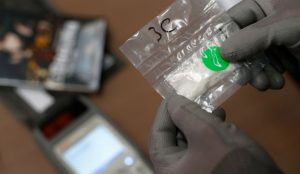
The U.S. Drug Enforcement Administration (DEA) said it had temporarily categorized a synthetic opioid nicknamed “pink” as a dangerous drug, after receiving at least 46 reports of deaths associated with its use.
There is a huge epidemic in the U.S. with regards to the abuse of opioids – a class of drugs that includes heroin and prescription painkillers.
The Centers for Disease Control and Prevention estimates that 78 Americans die every day from opioid overdose.
“Pink”, known to chemists as U-47700, comes from a strain of deadly synthetic opioids that are far more potent than heroin, and is usually imported to the United States mainly from China. This drug gets its name from the pink-purple hue that comes from the way it is cut or processed.
The DEA said it had temporarily categorized U-47700 as a “Schedule 1” substance, effective Nov. 14, classifying it as a dangerous addictive drug with no medicinal use, placing it on par with heroin, cannabis and LSD.
https://s3.amazonaws.com/public-inspection.federalregister.gov/2016-27357.pdf
The classification of “Pink” as a schedule I will last for two years, with a possibility of a longer extension if the DEA requires more data to determine whether it should be permanently scheduled.
Reports indicate that of the 46 fatalities, 31 occurred in New York and 10 in North Carolina of cases reporting between Oct. 2015 and Sept. 2016.
For information regarding the effects of drug abuse – Click Here
For information on a drug free work place – Click Here
For information on substance abuse programs – Click Here
For information on DOT Drug / Alcohol Testing requirements – Click Here
John Burgos, CPC
Business Development Manager
https://accrediteddrugtesting.net
(800) 221-4291
Accredited Drug Testing Inc
Health Screening USA Inc
WADA The Updated 2017 WADA Prohibited List
WADA The Updated 2017 WADA Prohibited List
Dec 7 2016
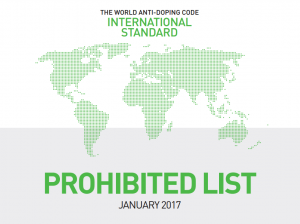
The World Anti-Doping Agency (WADA) has published the updated 2017 WADA Prohibited List, which will go into effect on January 1, 2017. This list regulates athletes, support personnel, including coaches, parents, physicians, trainers, and dieticians which should take some time to review the updated WADA Prohibited List to help understand how specific changes may impact them.
The Prohibited List is comprised of nine categories of prohibited substances and three categories of methods that are prohibited.
Individuals regulated by WADA can utilize the following link for more information on the prohibited status of an ingredient and/or medication. GlobalDRO.com. This is an easy-to-use and trusted source that is available 24/7/365 to all athletes and support personnel.
In addition to reviewing the updated WADA Prohibited List and using Global DRO please find below some of the highlighted changes for 2017:
Substances and Methods Prohibited At All Times (In and Out-of-Competition)
- Anabolic Agents
- New Prohibited Substance Added: 5α-androst-2-ene-17-one, commonly known as “Delta-2” or 2-androstenone, was added as an example of metabolite of DHEA, more recently found in dietary supplements.
- Peptide Hormones, Growth Factors, Related Substances and Mimetics
- Prohibited Substance Added: GATA inhibitors (e.g., K-11706) and Transforming Growth Factor- β (TGF-β) inhibitors (e.g., sotatercept, luspatercept) were added.
- S3: Beta-2 Agonists
- New Examples of Prohibited Substances Added: Examples of selective and non-selective beta-2-agonists were added (fenoterol, formoterol, higenamine, indacaterol, olodaterol, rocaterol, reproterol, salbutamol, salmeterol, terbutaline, vilanterol).
- S4: Hormone and Metabolic Modulators
- Example of Prohibited Substance Added: Androsta-3,5-diene-7,17-dione (arimistane) was added as a new example of aromatase inhibitor.
Prohibited Methods
- Manipulations of Blood and Blood Components
- Clarification on supplemental oxygen use: Supplemental oxygen administered by inhalation, but not intravenously, is permitted. To clarify this, M1.2 now reads “excluding supplemental oxygen by inhalation.”
Substances and Methods Prohibited In-Competition
- Stimulants
- Example of Prohibited Substance Added: Lisdexamfetamine was added as an example to S6.a; it is an inactive pro-drug of amphetamine
- Narcotics
- Prohibited Substance Added: Nicomorphine was added. It is an opioid analgesic drug, which is converted to morphine following administration.
** For a full listing of updates and clarifications please review the WADA Prohibited List in its entirety.
Athletes may have medically justified illnesses or conditions that require them to take a specific medication/substance, or undergo certain procedures/methods.
If an individual’s substance or method appears on the WADA Prohibited List, athletes may be granted a Therapeutic Use Exemption (TUE), which gives them permission to take a substance or use a method. These exemptions are only granted if the athlete provides the medical documentation necessary for an independent TUE Committee to determine that a substance or method is medically necessary to return the athlete to a normal level of health. Learn more at: www.usada.org/substances/tue.
For information regarding the effects of drug abuse – Click Here
For information on a drug free work place – Click Here
For information on substance abuse programs – Click Here
For information on DOT Drug / Alcohol Testing requirements – Click Here
John Burgos, CPC
Business Development Manager
https://accrediteddrugtesting.net
(800) 221-4291
Accredited Drug Testing Inc
Health Screening USA Inc

